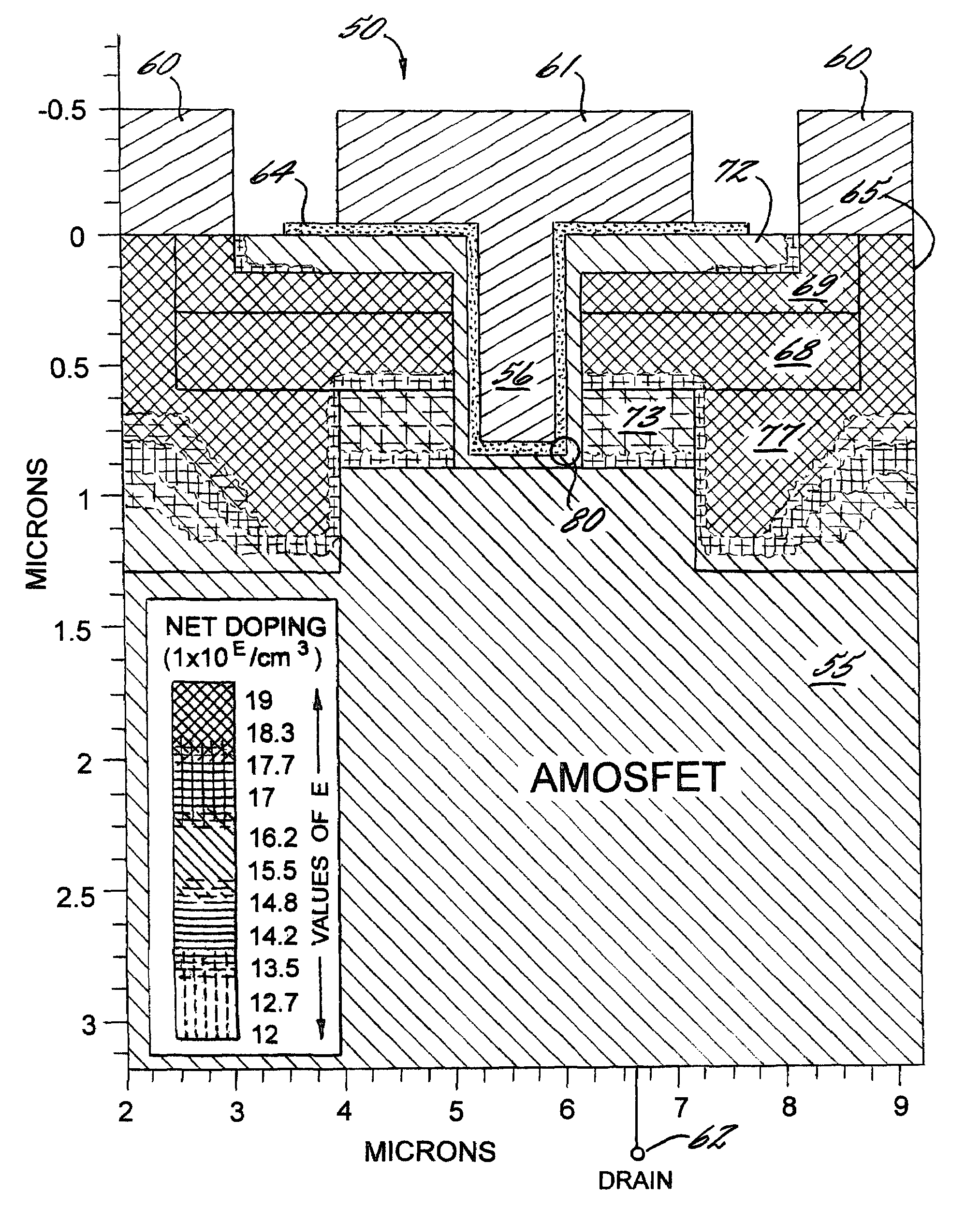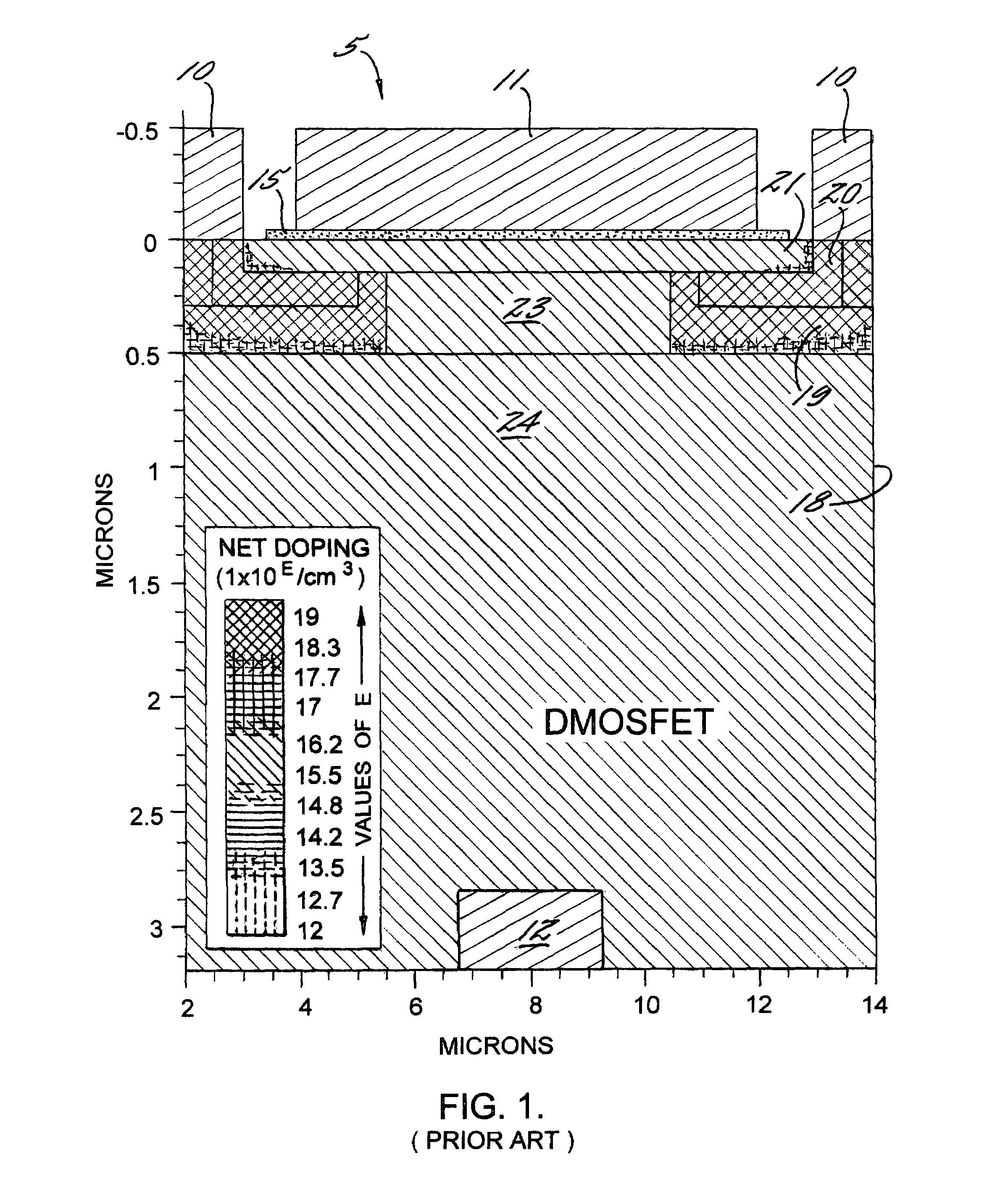Transistor with A-face conductive channel and trench protecting well region
a technology of transistor and conductive channel, applied in the direction of basic electric elements, electrical apparatus, semiconductor devices, etc., can solve the problems of marginal improvement in achieving the desired increase, the development of the mosfet on the a-face, and the inability to achieve optimal performance in the power mosfet context, and achieve the effect of high voltage blocking ability
- Summary
- Abstract
- Description
- Claims
- Application Information
AI Technical Summary
Benefits of technology
Problems solved by technology
Method used
Image
Examples
Embodiment Construction
[0035]The MOSFET of this invention includes a conductive channel on the A-face of a silicon carbide crystal epitaxial layer for increased channel mobility (e.g., up to 200 cm2 / Vs for the AMOSFET vs. 100 cm2 / Vs or less for prior art DMOSFETs). FIG. 5 sets forth the structure of the new AMOSFET (50). The drift region (55), or current spreading layer, supports epitaxial layers forming the active region of the AMOSFET (50) with current flowing from a source region (60) through the drift region (55), to the drain (62). Broadly, the AMOSFET (50) is a transistor having an insulated gate (61), or control contact, within a trench (56) in a semiconductor crystal structure (58). The trench (56) defines a pair of semiconductor mesas (65) that each encompass a p+ type layer (68) and an n+ type layer (69) forming a pn junction therein. The p+ type layer (68) is an epitaxial layer positioned under a buried channel (72) and between the trench (56) and a p+ doped well (77). The n+ type layer (69) is...
PUM
 Login to View More
Login to View More Abstract
Description
Claims
Application Information
 Login to View More
Login to View More - R&D
- Intellectual Property
- Life Sciences
- Materials
- Tech Scout
- Unparalleled Data Quality
- Higher Quality Content
- 60% Fewer Hallucinations
Browse by: Latest US Patents, China's latest patents, Technical Efficacy Thesaurus, Application Domain, Technology Topic, Popular Technical Reports.
© 2025 PatSnap. All rights reserved.Legal|Privacy policy|Modern Slavery Act Transparency Statement|Sitemap|About US| Contact US: help@patsnap.com



